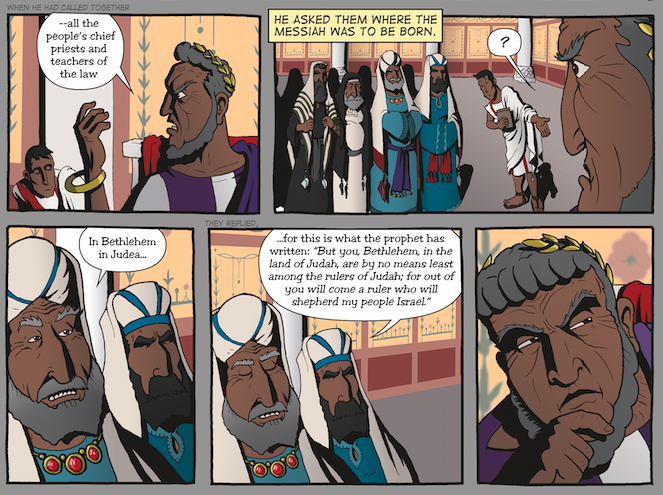How were Paul and Silas beaten?
In Acts 16:19-24, Paul and Silas are dragged before the two magistrates (Phillipi having duumviri - meaning “The two men”), and they “ordered them to be stripped and beaten with rods” and they were “severely flogged”.
When creating the Word for Word Bible Comics, I have to really dig into the culture and research how things actually happened at that time and in the places we’ve come to recognise from Scripture. In order to draw this event featuring Paul and Silas, I needed to understand what kind of rod they would use and how it was done.
We learn from verse 16:37 that the beating was in public and “the Greek verb gives the special Roman form of punishment, that of being beaten with the rods of the lictors. This, therefore, takes its place as one of the three instances to which St. Paul refers in 2 Corinthians 11:25.” (Ellicott's Commentary for English Readers)
Roman lictor with fasces. Small bronze, 20 BC. to 20 AD, British Museum London.
Lictor is the title of a special position: “A lictor (possibly from Latin ligare, meaning 'to bind') was a Roman civil servant who was an attendant and bodyguard to a magistrate who held imperium (Imperial authority). […] They carried rods decorated with fasces and, outside the pomerium, with axes that symbolized the power to carry out capital punishment. Dictatorial lictors had axes even within the pomerium. They followed the magistrate wherever he went, including the Forum, his house, temples, and the baths. Lictors were organized in an ordered line before him, with the primus lictor (lit. 'principal lictor') directly in front of him, waiting for orders. If there was a crowd, the lictors opened the way and kept their master safe, pushing all aside except for Roman matrons, who were accorded special honor. They also had to stand beside the magistrate whenever he addressed the crowd. […] Lictors also had legal and penal duties; they could, at their master's command, arrest Roman citizens and punish them.” (https://en.wikipedia.org/wiki/Lictor)
More info can be found here: (https://imperiumromanum.pl/en/roman-constitution/roman-republic/lictor/)
So the Lictor carry a fasces. This turns out to be a specific bundle of elm rods or whips. When I saw how they looked, I wasn’t sure if the Lictor struck with one rod of the whole bundle. But In this image (below), we can see that he has one from the set. Also, I read the Fasces was “the insignia of their office, as well as the dignity of the magistrate on whom they attended, consisted of a number of elm rods, bound with a thong into a bundle, which they carried on their shoulder. An axe was bound up in the bundle, and its head jutted forth from it. [...] The bundle, in fact, comprised the apparatus of the lictor as the executioner of the magistrates' sentence. The thong served him to bind the criminal, with the rods he inflicted beatings, and (in capital punishment cases) with the axe he beheaded." (https://donna-connections.blogspot.com/2009/07/stripes-and-rods.html)
Relief of a lictor holding the fasces, from the Museo Archeologico al Teatro Romano, Verona. José Luiz Bernardes Ribeiro / CC BY-SA 4.0
From subtleties in these verses and the wider scripture Paul and Silas may have been struck more than 39 times, as it says “‘And when they had laid many stripes on them‘ - The Jews were by law prohibited from inflicting more than 40 stripes, and usually inflicted but 39, (2 Corinthians 11:24). But there was no such law among the Romans. They were unrestricted in regard to the number of lashes, and probably inflicted many more. Perhaps Paul refers to this when he says ‘In stripes above measure.’ (2 Corinthians 11:23) that is, beyond the usual measure among the Jews, or beyond moderation.” (Barnes' Notes on the Bible)
It seems the lashing was not limited to the back as a quote from Cicero gives an account of a man named Gaius Servilius who was beaten by a Lictor “[He was beaten] until finally the senior Lictor Sextius…took the but end of his stick, and began to strike the poor man violently about the eyes, so that he fell helpless to the ground, his face and eyes bleeding profusely. Even then his assailants continued to rain blows on his prone body…Such was the treatment he then received; and having been carried off for dead at the time, very soon after did die.” (In Verrem 2.5.142)
Relief from Iulia Concordia depicting three lictors, National Museum of Concordia, Portogruaro, Italy. Attribution: Carole Raddato: CC BY-SA 2.0
It’s not coloured yet, but this is the Lictor with his fasces from my current work on the up and coming Word for Word Bible Comic.
To keep up to date with the project subscribe to our monthly newsletter:





































